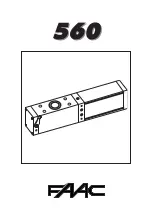
Adjustment Step 1
Adjust the UP and DOWN Limits
Do not make any limit adjustments until the
safety reversing sensors are completely
installed.
28
Limit adjustment settings regulate the points at
which the door will
stop when moving up or down.
The door will
stop in the up direction if anything
interferes with door travel. The door will
reverse in
the
down direction if anything interferes with the
door travel (including binding or unbalanced doors).
To operate the opener, press the Door Control push
button. Run the opener through a complete travel
cycle.
• Does the door open and close completely?
• Does the door stay closed and not reverse
unintentionally when fully closed?
If your door passes both of these tests, no limit
adjustments are necessary unless the reversing test
fails (See page 30).
Adjustment procedures are outlined below. Run the
opener through a complete travel cycle after
each adjustment.
Repeated operation of the opener during adjustment
procedures may cause the motor to overheat and
shut off. Simply wait 15 minutes and try again.
Read the procedures carefully before proceeding to
Adjustment Step 2. Use a screwdriver to make limit
adjustments.
Adjustment Label
Limit Adjustment
Screws
Left Side Panel
RESIDENTIAL DOOR OPENER
ASSEMBLED IN MEXICO
VOLTS
AMP.
Hz
H.P.
MODEL
SERIAL NO.
IN ALL CORRESPONDENCE REGARDING
THIS ARTICLE ALWAYS MENTION
5.0
60
MFG. DATE
196L
LISTED
120
®
Sears, Roebuck & Co. - USA
132B1632-11
FOR SERVICE INFORMATION ON RADIO CONTROLS REFER TO MODEL
NOS. ON RECEIVER AND TRANSMITTER UNITS. ORDER
REPLACEMENT PARTS BY MAIL OR THRU ANY OF OUR RETAIL STORES.
Cover
Protection
Bolt
2-4"
How and When to Adjust the Limits
• If the door does not
open completely, but
opens
at least five feet:
Increase
up travel. Turn the UP limit adjustment
screw clockwise. One turn equals 2" of travel.
NOTE: To prevent the trolley from hitting the
cover protection bolt, keep a minimum distance
of 2-4" between the trolley and the bolt.
• If door does not open at least 5 feet:
Adjust the UP (open) force as explained in
Adjustment Step 2.
• If the door does not
close completely:
Increase
down travel. Turn the DOWN limit
adjustment screw counterclockwise. One turn
equals 2" of travel.
If door still won't close completely and the trolley
bumps into the pulley bracket (see page 4 or 5), try
lengthening the door arm (See Page 26).
If you have adjusted the door arm to the maximum
length and the door still will not close completely,
lower the header bracket. See Installation Step 1,
pages 12 and 13.
• If the opener
reverses in fully closed position:
Decrease
down travel. Turn the DOWN limit
adjustment screw clockwise. One turn equals 2" of
travel.
• If the door
reverses when closing and there is
no visible interference to travel cycle:
If the opener lights are flashing, the Safety Reversing
Sensors are either not installed, misaligned, or
obstructed. See Troubleshooting, page 23.
Test the door for binding: Pull the emergency release
handle. Manually open and close the door. If the door
is binding, call for garage door service. If the door is
not binding or unbalanced, adjust the DOWN (close)
force. See Adjustment Step 2.
Adjustment Section: Pages 28 – 30
Improper adjustment of the travel limits will
interfere with the proper operation of the
safety reverse system.
The door might not
reverse properly when required and could
seriously injure or kill someone under it. Test
the safety reverse system following all
adjustments to the travel limits. See page 30.
WARNING













































